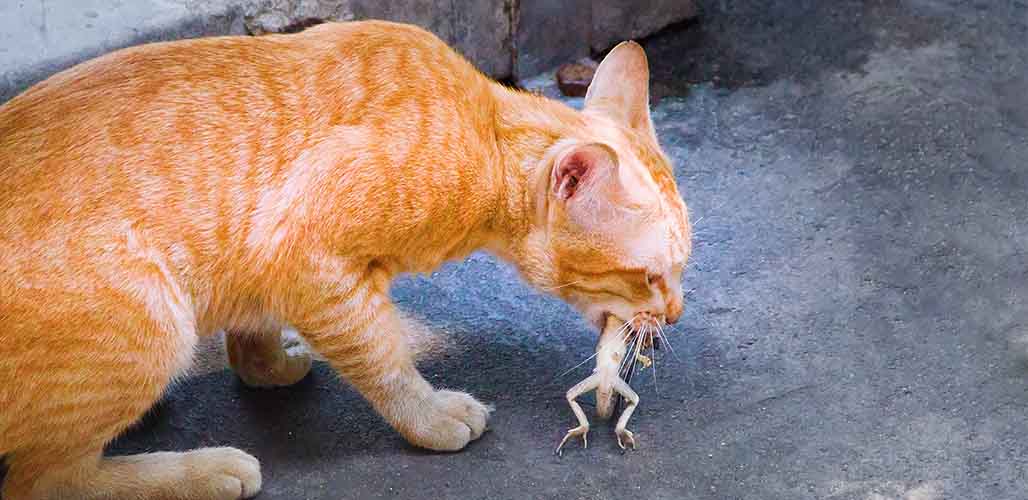Lizards are preyed upon by snakes, birds, and other larger animals. In the wild, lizards face various predators, including snakes, birds, and larger mammals such as foxes and coyotes.
These predators rely on lizards as a food source due to their small size and abundance in many ecosystems. While lizards have developed certain defensive strategies such as camouflage and fast movements to evade predation, they still remain an important part of the food chain.
Their vulnerability to predators highlights the delicate balance of nature and the role lizards play in maintaining biodiversity. Understanding the predators of lizards is crucial for their conservation and ensuring their continued survival in their respective habitats.

Credit: squeaksandnibbles.com
The Fascinating World Of Lizard Hunting
Lizards navigate a complex world filled with a myriad of predators. From birds of prey to snakes and mammals, there is no shortage of animals that prey on these fascinating creatures. Understanding the diversity of lizard predators is imperative when considering their ecological role within ecosystems.
These predators play a crucial part in maintaining the balance and population control of lizard species. Birds such as falcons and hawks are well-known hunters of lizards due to their excellent eyesight and aerial prowess. Snakes also play a significant role in the hunting and consumption of lizards, their stealth and agility making them formidable opponents.
Mammals like foxes and larger reptiles such as monitor lizards also contribute to the ecosystem’s lizard predation. By acknowledging and studying the various predators in the lizard’s natural habitat, we can gain a deeper appreciation for the dynamic interactions within the fascinating world of lizard hunting.
Strategies And Techniques Used By Lizard Predators
Lizards, being small and defenseless creatures, face a number of threats in the wild. Many predators have developed strategies and techniques to hunt and consume lizards effectively. One such tactic is camouflage and stealth, allowing predators to blend into their surroundings and surprise unsuspecting lizards.
Ambush predators prefer lurking in the shadows of the ecosystem, patiently awaiting the perfect opportunity to strike. On the other hand, some predators rely on their speed and agility to chase down their prey, turning the hunt into a thrilling pursuit.
Additionally, mouthwatering mimicry plays a significant role in deceiving lizards, with predators using tricks to imitate harmless species or even inanimate objects. Moreover, visual and auditory deception is another method employed by predators, luring lizards towards their inevitable doom. Overall, the ecosystem is filled with diverse strategies and techniques used by lizard predators, ensuring a continuous cycle of survival and consumption.
Common And Unique Lizard Predators
Snakes, the slithering assassins, are known for feasting on lizards, utilizing various hunting techniques. Birds of prey, masters of the sky, also target lizards, employing strategies to capture their prey. Mammalian hunters, with their jaws of death, have a carnivorous appetite for lizards, utilizing stealthy approaches and hunting methods.
Surprisingly, lizards themselves can be reptilian foes, engaging in intraspecific predation and even cannibalism among certain species. Arachnids, little monsters in their own right, feast on lizards, employing techniques to capture their prey. Insects and arthropods, though small, can be lethal predators that devour lizards, embodying tiny assassins.
These varied predators demonstrate the diverse range of creatures that prey upon lizards, each with their own unique methods of capturing their unsuspecting prey. The intricate web of the natural world reveals a constant struggle for survival and the delicate balance between predator and prey.
The Impact Of Lizard Predators On Ecosystems
Lizard predators play a crucial role in maintaining ecological balance within ecosystems. By preying on lizards, these predators contribute to trophic cascades, which have ripple effects on the entire food web. The presence of lizard predators helps control the population of lizards, preventing their overabundance and potential negative impacts on vegetation and other prey species.
Protecting lizard predators and their habitats is essential for conservation efforts. By conserving these predators, we can ensure the stability and health of ecosystems. This highlights the interdependence of species and the importance of maintaining the delicate balance of nature.
Understanding the ecological role of lizard predators allows us to appreciate their significance and work towards their preservation. So, it is crucial to recognize and protect the vital ecological role that lizard predators play in our ecosystems.
Conclusion
Lizards are fascinating creatures that serve as a vital part of various ecosystems. Understanding what eats lizards is important to grasp the intricate web of predator-prey relationships in the animal kingdom. Snakes are some of the most significant predators of lizards.
With their stealthy movements and ability to swallow large prey, snakes are a formidable opponent for lizards. Birds of prey, such as hawks and eagles, also play a role in controlling lizard populations. These magnificent birds have sharp talons and keen eyesight, making them efficient lizards hunters.
Other predators of lizards include mammals like foxes, weasels, and feral cats. By recognizing the threats that lizards face, we can better appreciate their existence and strive to protect their habitats. Conservation efforts should focus on minimizing human encroachments, preserving wildlife corridors, and creating awareness about the importance of maintaining a balanced ecosystem.
Only through collective action can we ensure the survival and thriving future of lizards and their predators alike. So let us cherish the beauty and diversity of these incredible reptiles and work towards their preservation. It is clear that there are several predators that prey upon lizards, including snakes, birds of prey, and mammals.
Protecting the habitats and understanding the ecological roles of these predators is crucial for maintaining a healthy and vibrant ecosystem. Remember, every creature has a purpose, and the harmonious coexistence of lizards and their predators is essential for nature’s balance.
Let us embrace this intricate web of life and strive to protect and appreciate the remarkable lizards and their importance in the natural world.







